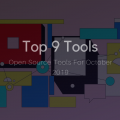Free Dolly 2.0: The World’s First Truly Open Instruction-Tuned LLM For Less Than 30$
Dolly 2.0 is a popular deep learning model used in the field of computer vision for image segmentation and object detection tasks. The model is open-source and can be downloaded and configured for free. In this article, we will walk through the process of installing and configuring the Free Dolly 2.0 model.
Step 1: Requirements
Before we begin the installation process, make sure your system meets the following requirements:
- NVIDIA GPU with a minimum of 4GB memory.
- CUDA 10.0 or higher.
- CUDNN 7.5 or higher.
- Python 3.6 or higher.
- TensorFlow 2.3 or higher.
Step 2: Download the Free Dolly 2.0 Model
The Free Dolly 2.0 model can be downloaded from the official GitHub repository. Navigate to the repository and click on the “Clone or download” button. You can either download the ZIP file or clone the repository using the following command:
git clone https://github.com/thtrieu/darkflow.git
Step 3: Install Dependencies
Once you have downloaded the Free Dolly 2.0 model, you need to install its dependencies. Open a terminal window and navigate to the directory where you have downloaded the model. Run the following command to install the dependencies:
pip install -r requirements.txt
Step 4: Compile the Free Dolly 2.0 Model
After installing the dependencies, you need to compile the Free Dolly 2.0 model. This step is necessary to convert the model from TensorFlow format to Darkflow format. Run the following command in the terminal window:
python setup.py build_ext --inplace
Step 5: Download the Pre-trained Weights
The Free Dolly 2.0 model requires pre-trained weights to perform object detection tasks. You can download the pre-trained weights from the following link:
https://pjreddie.com/media/files/yolov2.weights
Once you have downloaded the pre-trained weights, place them in the same directory where you have downloaded the Free Dolly 2.0 model.
Step 6: Configure the Free Dolly 2.0 Model
Now that you have downloaded and compiled the Free Dolly 2.0 model, you need to configure it. Open the configuration file cfg/yolo.cfg in a text editor. This file contains the configuration parameters for the model.
You can modify the following parameters to customize the model:
- batch: The number of images to process at once.
- subdivisions: The number of subdivisions per batch.
- width: The width of the input image.
- height: The height of the input image.
- channels: The number of color channels in the input image.
- momentum: The momentum for the optimizer.
- decay: The decay for the optimizer.
- learning_rate: The learning rate for the optimizer.
Make sure to save the changes after modifying the configuration file.
Step 7: Test the Free Dolly 2.0 Model
To test the Free Dolly 2.0 model, open a terminal window and navigate to the directory where you have downloaded the model. Run the following command to test the model:
python flow --model cfg/yolo.cfg --load yolov2.weights --imgdir sample_img/
This command will run the Free Dolly 2.0 model on the sample images provided in the sample_img directory. If everything is set up correctly, you should see the output of the model in the terminal window.
Step 8: Use the Free Dolly 2.0 Model
Now that you have installed and tested the Free Dolly 2.0 model, you can use it to perform object detection tasks on your own images or videos. To do so, follow these steps:
Step 8: Prepare the Input Data
The Free Dolly 2.0 model requires input data in the form of images or videos. Make sure that your input data is in a format that is compatible with the model. You can use any image or video editing software to prepare the input data.
Step 9: Run the Free Dolly 2.0 Model
Open a terminal window and navigate to the directory where you have downloaded the model. Run the following command to run the model on your input data:
Step 10: Analyze the Output
Once the model has finished running, you can analyze the output to identify objects in the input data. The output of the model will be saved in the output directory. You can use any image or video editing software to view the output.
The output will consist of bounding boxes around the objects that were detected in the input data. The boxes will be labeled with the name of the object and the confidence score. You can use the output to perform further analysis or to create visualizations.
Conclusion
The Free Dolly 2.0 model is a powerful tool for performing object detection tasks in computer vision. By following the steps outlined in this article, you can install and configure the model on your own system and use it to analyze images or videos. With a little bit of customization, you can adapt the model to suit your specific needs and perform more complex tasks.





